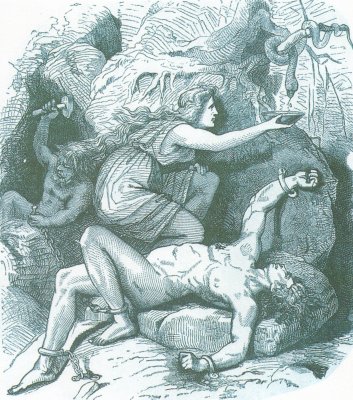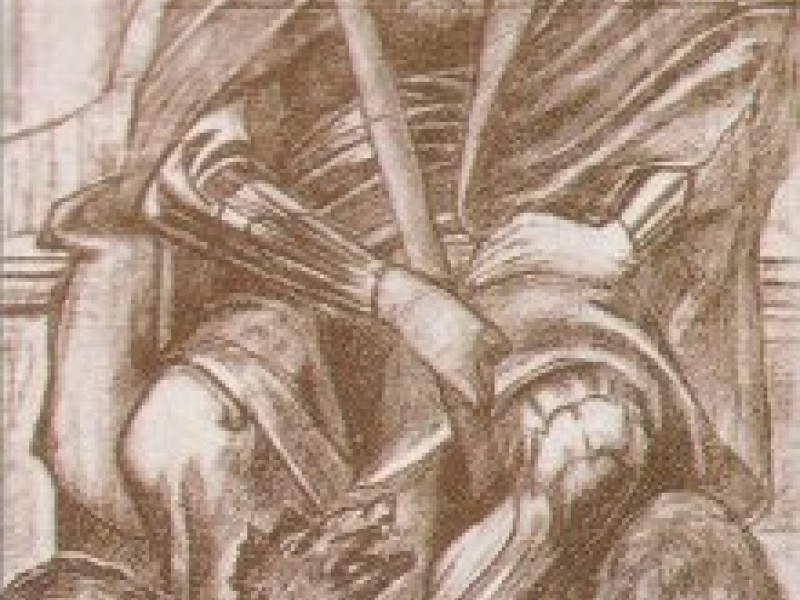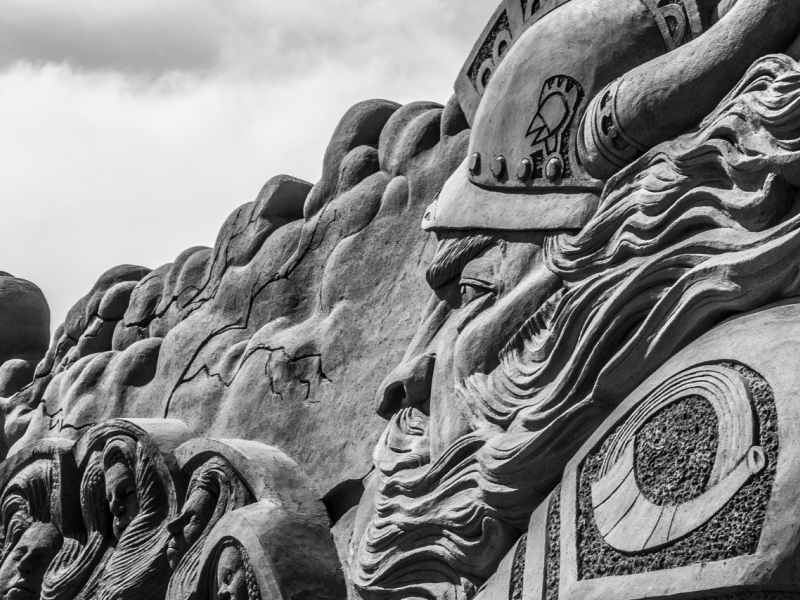Loki
God of fire. Loki (Lopt) was the son of the giant Fárbautia (Farbautia, "Cruel-Striker") and the giantess Laufey ("Tree Island") or Nal. Loki was a brother of Byleist and Helblindi.
Loki was married to Sigyn, he was father of Narfi (Narvi) and Vali. (Don't confuse this Vali with the son of Odin and Rind.)
By the giantess Angerboda ("Distress Bringer"), Loki became the father of Hel, goddess of death; Jörmungand (Jormungand), the evil Misgard Serpent; and Fenrir, the giant wolf.
Loki was also the mother of Sleipnir, by the stallion Svadilfari. Loki had transformed himself into a mare to lure Svadilfari away from his owner, the giant Hrimthurs, to prevent the giant from finishing construction of Asgard and losing the wager. (See Construction of Asgard in Norse Creation).
Loki was known as the Trickster and Shape-changer. Though his origin was that of a frost giant, since he became Odin's blood brother, Loki was a very important member of the Aesir. (There is some confusion and argument about whether he was a god or not. If he was a god, then whether he was an Aesir or not. Anyway, I put him down as one.)
None of the gods liked him, but he was allowed to attend the feasts held in Asgard, since Odin and Loki became blood brothers. He was a cunning and resourceful god, often helping Odin and the other gods, though often causing trouble and embarrassment as well.
Originally, he was a mischievous god but not an evil god. However, Loki was a god who liked to play practical jokes on the gods and humans. Like when he cut the beautiful golden hair of Sif.
Loki also appeared in the Völsunga Saga (Volsunga Saga), when he killed Hreidmar's son, Otter. Odin and Hoenir were held as hostage until Loki could find the ransom to release the two gods. Loki forced the dwarf Andvari to give up all his treasure. (See Otter's Ransom)
Later, his role became darker and more sinister, representing the evil god as opposed to the Aesir, gods of good. He was indirectly involved with death of Balder. Loki tricked Frigg into revealing his son's weakness, and had Frigg's other son Hod throw the mistletoe at his brother, killing Balder instantly.
To punish Loki, the gods bound the fire god in a cavern. Venom from a serpent would drip on his head, causing tremendous agony and such great spasms that the whole earth shook. His loyal wife Sigyn stayed with him, catching the venom in a cup. Loki's respite was short, since Sigyn had to empty the cup whenever it was full, which resulted in the venom dripping on his head again. (See Death of Balder for the full story.)
At Ragnarök (Ragnarok), he would escape from his imprisonment and lead the war against the gods. Loki would kill Heimdall, but he himself would die at Heimdall's hand.
Snorri compared Loki with Ulysses (Odysseus), the Greek hero, because Loki was cunning and deceitful.
Related Information
Name
Loki, Lopt – "Trickster".
Hvedrung.
Ulysses (Greek/Roman).
Related Articles
By Jimmy Joe









